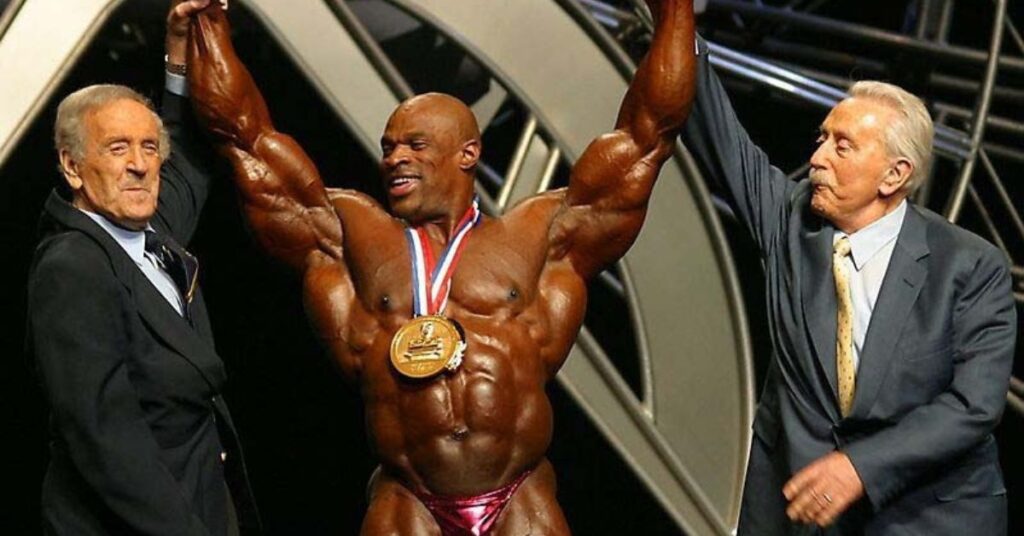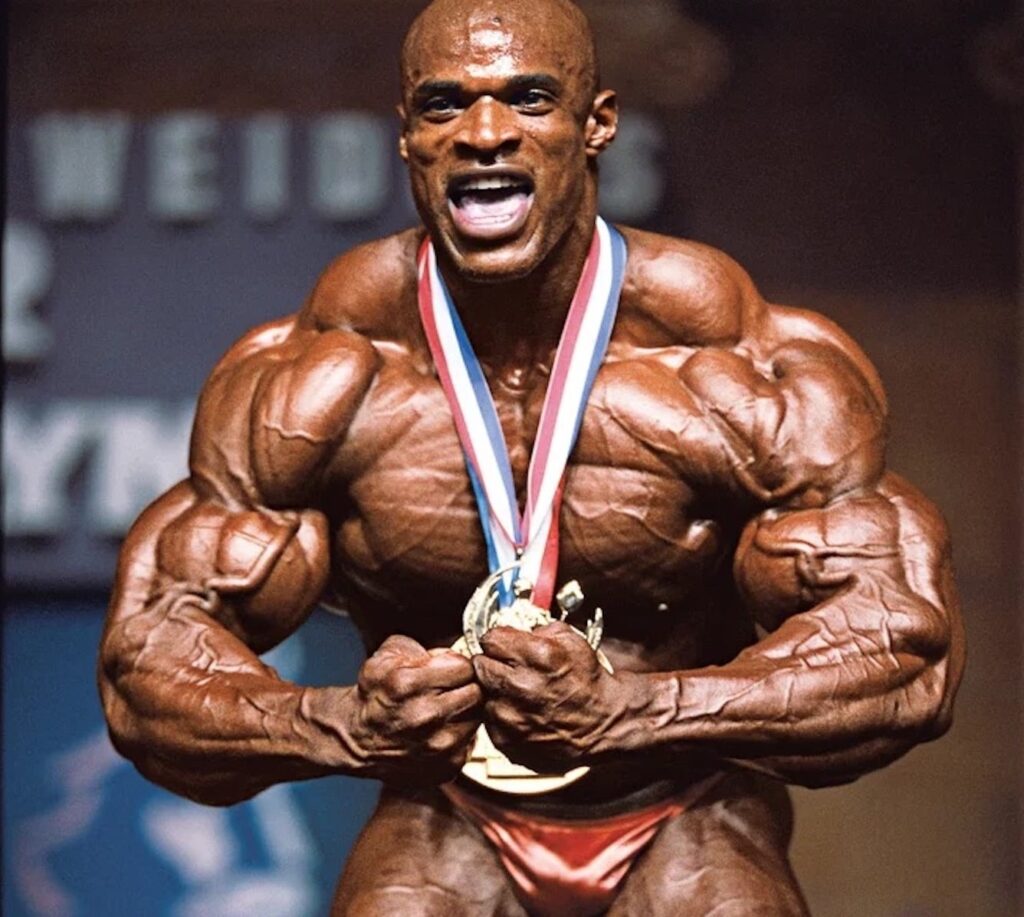In the world of bodybuilding, few names command as much respect and admiration as Ronnie Coleman —the eight-time Mr. Olympia champion whose dominance on stage is rivaled only by his enduring influence off it.
Known for his iconic catchphrases like “Yeah Buddy!” and “If it don’t challenge you, it don’t change you,” Coleman has long been a motivational force in the fitness community.
But recently, the legendary bodybuilder took a more serious tone, addressing a growing concern that has shaken the sport to its core: the alarming number of deaths among professional bodybuilders—and how far too many are risking their lives to win trophies .
In a candid conversation with YouTube personality Bradley Martyn , Ronnie Coleman reflected on recent tragedies—including the sudden passing of Cedric McMillan—and shared a personal near-death experience from his own competitive days.

His message was clear:
“This sport is not worth dying for.”
🧨 The Dark Side of the Sandow: Rising Deaths in Bodybuilding
Over the past several years, the bodybuilding community has mourned the loss of multiple elite athletes, including:
- Shawn Rhoden (2021) – Former Mr. Olympia
- George Peterson (2023)
- Cedric McMillan (2024) – Fan-favorite and former Arnold Classic champion
These deaths have reignited a long-overdue conversation about the health risks associated with extreme conditioning, performance-enhancing substances, and the relentless pressure to maintain peak physiques year-round.
Coleman, who has endured multiple surgeries and chronic pain due to the physical toll of his career, understands these dangers better than most.
“When you start dying, this sport is not worth dying for.”
⚖️ A History of Drug Testing and What Happened When It Was Removed
During Coleman’s era, drug testing was implemented—not to detect anabolic steroids—but to monitor the use of diuretics , which are often used to enhance vascularity and dryness on stage but can be deadly when misused.

Coleman recalled a pivotal moment in bodybuilding history:
“Back when I was coming up, we had one guy die and they started drug testing every show… He died of diuretics, of course. So they started drug testing for diuretics every show, and nobody died or nothing—until they stopped.”
That death was Mohammed Benaziza , a French-Algerian bodybuilder who collapsed during the 1996 IFBB European Grand Prix and later passed away.
His death shocked the industry and led to mandatory diuretic testing at all IFBB events.
However, Coleman revealed that this policy changed after an incident involving another bodybuilding legend:
“When Jay [Cutler] failed the test, he told them he was going to sue them. They said okay, well we won’t keep testing, and you get the chance to keep your prize money too. We’ll just do away with the testing. Jay changed that. They didn’t test no more after that.”
The removal of diuretic testing marked a turning point—one that some believe opened the door to increased risk-taking and ultimately contributed to the health crises we see today.
💀 Coleman’s Own Brush With Death: The 2001 Mr. Olympia
Perhaps the most chilling part of Coleman’s interview was his recollection of the morning of the 2001 Mr. Olympia —a day that nearly cost him his life.

Despite being in peak condition, Coleman woke up severely dehydrated, nauseous, and barely able to function.
“I woke up the morning of the Olympia and I felt awful. I was totally dehydrated… I felt real bad. I was to the point where I felt like I was kind of dying. It scared the living hell out of me.”
Ronnie Coleman immediately called his nutritionist, ready to pull out of the competition entirely.
“Forget this show, I’m going to the hospital. I’m not going to die for this sport.”
After emergency hydration and rest, Coleman managed to make it on stage and defeated Jay Cutler to claim his second consecutive Olympia title. But the experience left a lasting impression.
“It opened my eyes. I didn’t want to go through that again.”
🔁 From Diuretics to Overtraining: A Culture of Risk
While diuretics remain a major concern, Coleman’s story highlights a broader issue within modern bodybuilding: the culture of pushing limits without regard for long-term health .
Competitors today face immense pressure to be bigger, drier, and more vascular than ever before. This often leads to:

- Extreme water manipulation
- Excessive sodium cycling
- Prolonged dieting phases
- Overuse of cardio and excessive training volume
And while some argue that these practices are necessary to win, Coleman warns that the cost may be too high.
“Not at all. If you start dying, forget it. Your health comes first.”
❤️ A Call for Change: Can Bodybuilding Be Made Safer?
Since Cedric McMillan’s tragic passing, there has been a noticeable shift in the community. More athletes are taking proactive steps to monitor their health, including:
- Getting regular heart checkups
- Consulting cardiologists
- Prioritizing recovery over constant contest prep
Powerlifters and strength athletes have also joined the conversation, emphasizing the importance of longevity over aesthetics.
Still, meaningful reform will require action from both governing bodies and competitors themselves.
Coleman believes that bringing back diuretic testing could be a critical first step.
“They should start testing again. That’s what kept people alive back then.”
🎯 Final Thoughts: Bodybuilding Should Build Lives, Not End Them
Ronnie Coleman’s words serve as both a warning and a wake-up call.
Bodybuilding has always been about pushing human potential to its absolute limit—but those limits shouldn’t include life-threatening health risks .
As fans, athletes, and coaches, we must ask ourselves: Are we valuing the sport’s future more than the people who make it possible?
Coleman’s legacy isn’t just about his eight Olympia titles—it’s about the lessons he’s lived through and the wisdom he continues to share.
So let’s take his words to heart:
“This sport is not worth dying for.”
Because in the end, no trophy is worth a life.
